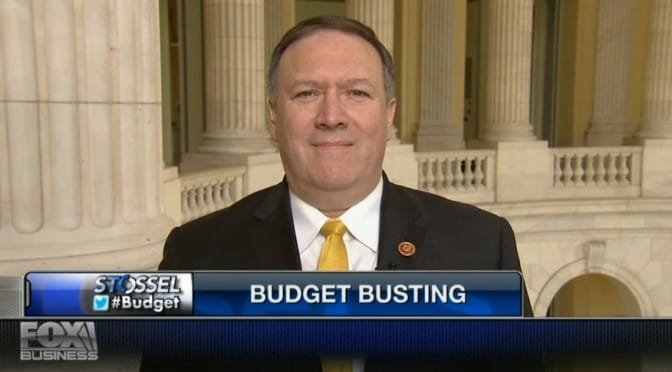Tag: United States government
-

Special interests defend wind subsidies at taxpayer cost
The spurious arguments made in support of the wind production tax credit shows just how difficult it is to replace cronyism with economic freedom.
-

Pompeo on Obama budget
Rep. Mike Pompeo appeared on Stossel and told the host that President Obama’s budget will leave the U.S. begging for money down the road.
-
We could use the shutdown as a teachable moment
Markets can provide a very strong form of regulation, if we let them work.
-
Pompeo on Syria
On today’s episode of KAKE TV “This Week in Kansas” U.S. Representative Mike Pompeo discusses Syria.
-
Pompeo on Syria intervention
U.S. Representative Mike Pompeo explains his position on Syria.
-
Pompeo on national security issues
On the Joseph Ashby Show today, U.S. Representative Mike Pompeo of Wichita explained his views on our national security programs.
-
Pompeo: Systems are needed, and risk of abuse is low
U.S. Representative Mike Pompeo says the intelligence-gathering systems in place are needed, and that layers of oversight minimize the risk of abuse. The leaks by Edward Snowden, he says, have harmed the security of America.